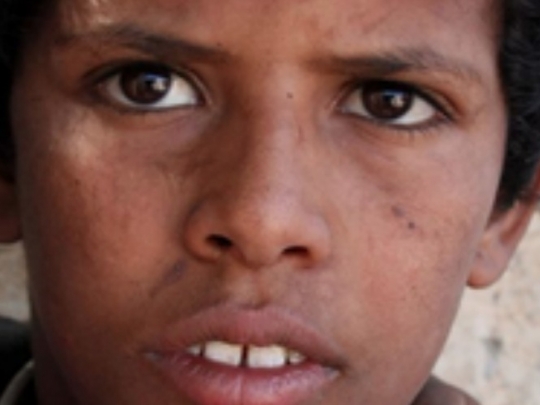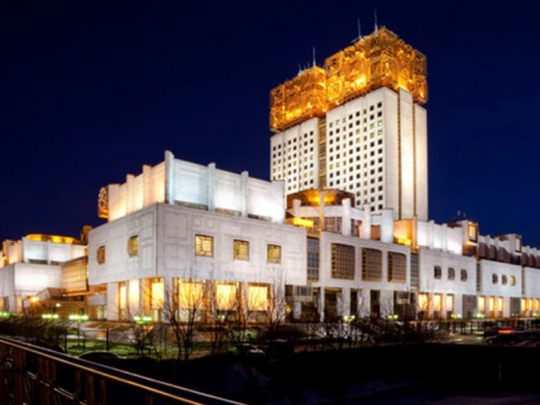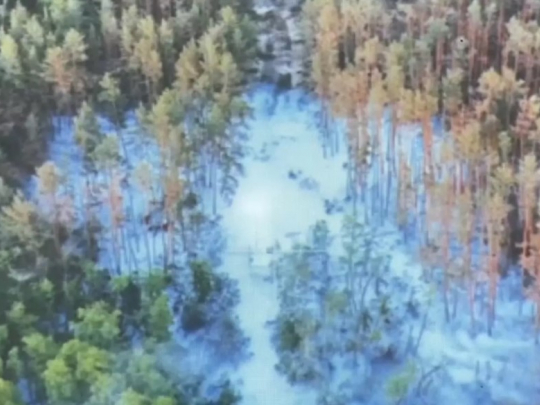Portrait of an U.S. Drone Victim

The food stand was completely destroyed. So, too, was the body of its owner, 21-year-old Sadiq Rahim Jan.
"My brother was torn to pieces. Almost nothing was left of him," says Islam Rahim Jan.
It was July 2012 and his death plunged his family into despair and poverty.
Sadiq was the family's main breadwinner. His income as the owner of the only food stand in the village of Gardda Zarrai, in the eastern Afghan province of Paktia, provided for his parents and four siblings.
Nobody knows why he was targeted in a drone strike. But since 2001, US drone attacks have become a near regular feature of life - and cause of death - in Afghanistan, particularly in the country's south and east.
According to the London-based Bureau of Investigative Journalism, Afghanistan is the "most drone-bombed country in the world". Between 2001 and 2013, at least 1,670 drone strikes took place in the country.
But accurate data about the impact of those strikes, particularly casualty figures, does not exist. There are a number of reasons for this.
On the one hand, the media seems to largely ignore drone warfare and its victims. On the other, there is little political will for transparency, be it in Washington or Kabul. In 2013, a United Nations report on drone strikes in Afghanistan, Pakistan and Yemen pointed out that the "clandestine nature of US drone strikes hinders evaluation of their impact on civilians".
So the names and stories of many of the victims remain unknown to all but their families.
Compounding this invisibility is the fact that the limited media coverage is often inaccurate.
When Sadiq was killed, several national media outlets reported that a "Taliban commander" had been killed by a drone strike in Gardda Zarrai.
"It's really hard to pin down in these sorts of cases whether this is deliberate misinformation by someone with a malicious motive, or if it's an honest mistake," says Jack Serle of the bureau, who has spent years studying drone strikes.
"In my experience, police and army officials and provincial government officials are generally the main journalistic sources for this kind of information. But it is not often clear where they get their information [from]," says Serle. "In the past, these kinds of people have told me they get intelligence from the NDS, the Afghan intelligence service, who gets it from the US. But that's not always going to be the case."
Sadiq's family say they were outraged when Radio Azadi, an Afghan branch of the US government's external broadcast services, and other national news platforms connected their son to a group with which they say he had no affiliation. In fact, they say, Sadiq had never been involved with any armed group.
But in the days and weeks after Sadiq was killed, they say, not a single journalist visited their village to collect facts or talk to the people who knew him.
The family turned to the local police and army. But, although they expressed their regret over Sadiq's death, they told his family not to take any further action.
"In fact, they just want to silence my family because such war crimes show the Afghan government and the United States in a bad light," says Farhad Khan, Sadiq's cousin who lives in Germany and now tries to provide financial support to the family.
Until today, Sadiq's family have not received any explanation as to why their son was killed or why he was subsequently classified as a member of the Taliban.
"He welcomed me like a brother [when I would visit Afghanistan]," Farhad remembers, adding that they became best friends.
"The whole village, from young to old, respected and loved Sadiq. He was a charming and charismatic person who believed in peace, love and freedom," Farhad says.
"For that reason, it feels so wrong for all these people that he is just remembered as a terrorist by the rest of the world."
Photographing the victims
It was cases like Sadiq's - the nameless, faceless drone victims described as members of the Taliban with no supporting evidence - that made Noor Behram, a photojournalist from North Waziristan, the border region between Pakistan and Afghanistan, set out to explore the scenes of drone strikes.
"I started with my investigation in 2007, when it was reported that an aerial attack killed al-Qaeda-linked militants," Behram says. "But I found torn women's clothing, which was evidence that civilians were killed too."
From that time on, he has visited the site of drone strikes as soon after an attack as possible. Travelling on a motorbike, he photographs the scene and victims and speaks to witnesses.
He noticed that all that seemed to be required for the Pakistani and international media to describe a male victim as a member of the Taliban was that he had long hair and a beard - a common look among many Pashtun men on either side of the border.
"After conversations with editors and journalists, I understood that if a drone strike killed an innocent adult male civilian, such as a fruit seller or food vendor, the victim's long hair and beard would be enough to stereotype him as a militant."
Sadiq had long hair and a beard. But even that isn't always a requirement.
A four-year-old victim
In April 2013, Naqibullah took his son, four-year-old Amir, to the city of Asadabad, in the eastern province of Kunar, for medical treatment. Naqibullah told his brother, 25-year-old Abdul Wahid, to take his son back to their village while he stayed in the city.
When he telephoned home to find out if they had returned safely, he was told they had not.
"Locals told me that my brother and my son had been killed by a drone strike," Naqibullah remembers.
"I couldn't bear the news. I lost all sense in this moment," he says. "Suddenly, all the pictures of my son and my brother came to my mind while my tears could not stop."
According to Naqibullah, government officials insisted that his son and brother were Taliban fighters. They said the onus was on him to prove otherwise.
Today, Naqibullah cares for Abdul Wahid's children. He says one of them, Hilal, is always asking about this father.
Unreported
According to a recent report by the United Nations Assistance Mission in Afghanistan (UNAMA), more than 11,000 civilians were killed or wounded in the country in 2015.
While armed groups and the Afghan military are thought to have been responsible for 98 percent of these incidences, 2 percent of civilian casualties were attributed to international forces, mainly in the form of air strikes.
However, the report points out that civilian casualties caused by international military forces and the Afghan air force increased by 83 percent in 2015, causing 296 civilian casualties, of which 149 were deaths. Fifty-seven percent of those were caused by international forces.
According to UNAMA, the main reason for the increase was the attack on the MSF hospital in Kunduz on October 3.
The US government data does not distinguish between classic aerial attacks and drone strikes. For that reason, it isn't clear how many drone strikes really took place in Afghanistan.
But with three different sources required to confirm a single casualty, the families of many of those killed say their relatives have not even made it into that count.
"You will not find my cousin and other victims like him in these reports," says Sadiq's cousin, Farhad.
Critics of the UN report say that without journalists or human rights activists present in the country's most war-torn areas, killings often go unreported and unsubstantiated, never making it into formal records.
"Most war-torn areas of Afghanistan, especially where drone strikes take place regularly, are not visited by journalists or activists. They are considered as too dangerous, as dead zones," says Waheed Mozhdah, a political analyst based in Kabul.
Besides, records of civilian casualties only begin from 2009, eight years after the war started.
In fact, the very first recorded incident of a strike by a weaponised drone took place on October 7, 2001, when US forces targeted the late Taliban leader Mullah Mohammad Omar in Kandahar.
Omar was not killed on that day - but many ordinary civilians, just like Sadiq, have been in the years since.
- Source : Emran Feroz















